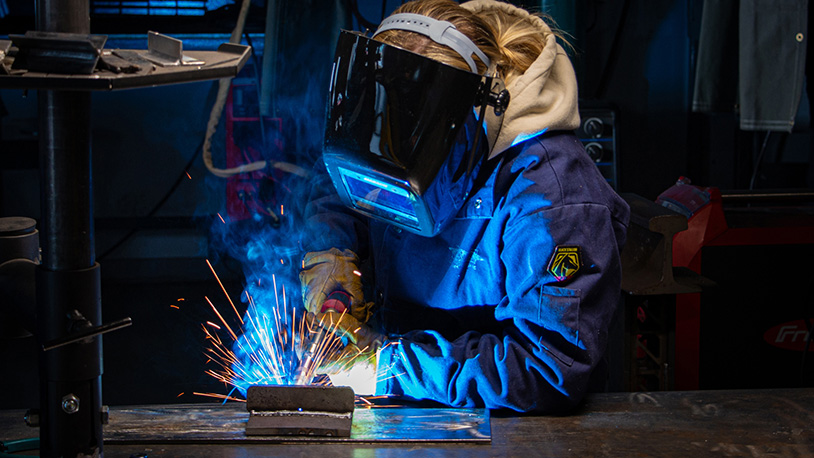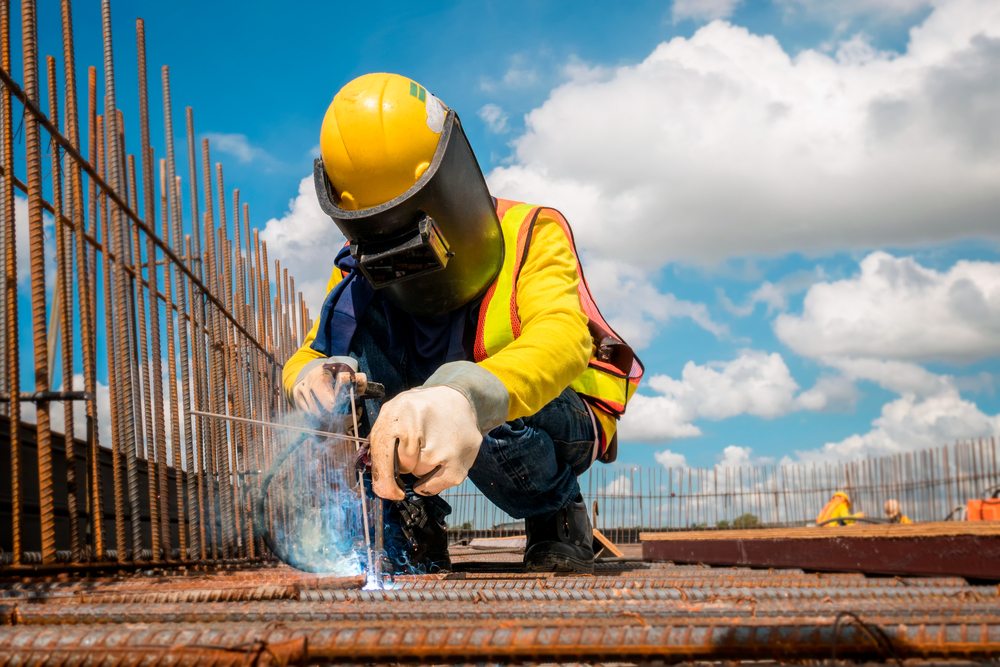Everything about Welding: Key Insights Into Techniques and Ideal Practices for Success
Welding includes a variety of methods, each fit for specific products and applications. Understanding these approaches, such as GMAW, SMAW, and TIG, is vital for attaining perfect results. The appropriate tools and security practices can not be overlooked. As prep work and troubleshooting play vital duties in the welding procedure, grasping these components can significantly boost the quality of the end product. What are the crucial factors that assure an effective weld?
Understanding Different Welding Techniques
Welding methods include a variety of methods, each suited to particular applications and products. Among one of the most usual techniques are Gas Metal Arc Welding (GMAW), Protected Metal Arc Welding (SMAW), and Tungsten Inert Gas Welding (TIG) GMAW, additionally referred to as MIG welding, is popular for its speed and adaptability, making it excellent for thin materials. SMAW, or stick welding, is preferred for its simpleness and effectiveness in outdoor settings, specifically with thicker steels. TIG welding offers precision and control, making it appropriate for complex work and non-ferrous metals (Montana Mobile Welding and Repair Welding). Each technique has its unique benefits and considerations, enabling welders to choose the finest method based on the project's requirements, product type, and desired results. Recognizing these strategies is vital for successful welding
Vital Welding Devices and Devices
While different welding methods call for details abilities, the appropriate equipment and tools are just as crucial for accomplishing high quality outcomes. Vital welding equipment consists of welding makers, which vary relying on the strategy-- such as MIG, TIG, or stick welding. Safety gear, consisting of gloves, aprons, and headgears, warranties security and convenience during the procedure. In addition, fixtures and clamps aid secure products in location, making sure accuracy in welds. Consumables like welding rods, wire, and protecting gas are likewise essential parts that affect the top quality of the weld. Tools such as cutters and mills assist in surface area prep work and post-weld completing, adding to an expert end result. Investing in top quality equipment eventually improves the performance and efficiency of welding projects.
Security Practices in Welding
Proper safety practices are essential in the welding sector to protect workers from potential hazards. Welders need to wear appropriate personal protective devices (PPE), consisting of headgears with correct shading, gloves, and flame-resistant apparel. Appropriate air flow is essential to reduce exposure to dangerous fumes and gases generated during the welding process. Additionally, workers ought to be learnt the appropriate handling of welding equipment to prevent accidents. Fire precaution, such as keeping combustible products away from the welding location and having fire extinguishers conveniently offered, are needed. Regular examinations of tools and workspaces can aid identify prospective threats before they result in accidents. By adhering to these safety and security techniques, welders can develop a more secure working setting and lessen threats related to their profession.
Readying Materials for Welding
Preparing materials for welding is an essential step that greatly affects the quality and integrity of the last item (Fabrication). Correct preparation includes cleaning the surface areas to remove contaminants such as corrosion, oil, and dust, which can endanger the weld. Methods such as grinding, sanding, or using solvents are commonly utilized to achieve a clean surface area. Furthermore, guaranteeing that the materials fit with each other snugly is essential; gaps can cause weak welds. It's also important to think about the alignment and positioning of the parts, as this will influence the convenience of welding and the final end result. Lastly, picking the suitable filler material and guaranteeing compatibility with the base metals is necessary for accomplishing solid, resilient welds
Tips for Achieving High-Quality Welds
Achieving high-quality welds calls for attention to detail and adherence to ideal techniques throughout the welding procedure. Correct joint preparation is vital, ensuring surface areas are totally free and tidy from pollutants. Picking the proper filler material and welding method based on the base metals is vital for ideal bonding. Keeping constant traveling rate and angle while welding can promote and prevent flaws uniformity. In addition, regulating warm input is necessary; too much warm can cause warping and compromised joints. On a regular basis examining the welds throughout the procedure enables instant adjustments if essential. Employing suitable post-weld therapies, such as cleaning and stress relief, can boost the resilience and stability of the weld, inevitably ensuring an effective result.
Fixing Usual Welding Issues
Welding typically offers difficulties that can affect the quality and stability of the last item. Usual concerns such as porosity, irregular weld grains, and getting too hot can occur, each requiring details repairing strategies. Comprehending these issues is necessary for welders to boost their skills and attain suitable outcomes.
Porosity Issues Explained
Porosity can frequently be forgotten, it continues to be a crucial issue in welding that can endanger the integrity of a completed item. Porosity refers to the presence of tiny gas pockets within the weld grain, which can deteriorate the joint and lead to premature failure. This issue normally occurs from pollutants, moisture, or inappropriate protecting gas coverage during the welding process. To alleviate porosity, welders must confirm that the base materials are clean and completely dry, utilize ideal securing gases, and maintain consistent welding criteria. Routinely examining the equipment and setting can additionally aid determine potential problems before they show up in the weld. Attending to porosity properly is important for attaining strong, durable welds that fulfill quality criteria.

Inconsistent Weld Beads
Inconsistent weld grains can considerably impact the quality and stamina of a completed item. Various factors add to this issue, consisting of inappropriate travel speed, inaccurate amperage setups, and irregular electrode angles. When the welder moves also rapidly, a grain may show up narrow and lack infiltration, while relocating also slowly can create too much build-up. In addition, using the wrong amperage can lead to either undercutting or excessive spatter, both of which concession weld stability. The welder's technique, such as inconsistent lantern activity, can additionally lead to uneven grain appearance. To alleviate these troubles, welders need to concentrate on keeping steady, regulated activities and ensuring proper devices setups to attain harmony in their welds. Consistency is key to accomplishing strong and trusted welds.
Getting Too Hot and Warping Issues
Excessive warm during the welding process can cause considerable overheating and deforming concerns, influencing the structural honesty of the work surface. These issues usually show up as distortion, which can jeopardize alignment and fit-up, making further setting up testing. Aspects adding to overheating include the selection of welding specifications, such as voltage and travel rate, along with more info the type of material being bonded. To alleviate these problems, welders should preserve consistent traveling speed and proper heat input while keeping an eye on the workpiece temperature level. Furthermore, pre-heating or post-weld warmth treatment can aid relieve tensions triggered by quick air conditioning - Montana Mobile Welding and Repair. Routine assessment and adherence to best techniques are important in protecting against overheating and making sure the longevity and dependability of bonded structures
Regularly Asked Concerns
What Are the Career Opportunities in the Welding Sector?
The welding market supplies varied occupation possibilities, consisting of placements as welders, inspectors, engineers, and teachers. Professionals can work in production, building and construction, aerospace, and automotive industries, gaining from solid demand and affordable salaries in numerous duties.
How Can I Improve My Welding Speed Without Giving Up Top Quality?
To improve welding rate without compromising high quality, one must exercise efficient techniques, preserve equipment, optimize setups, and boost hand-eye coordination. Normal training and looking for feedback can additionally significantly add to accomplishing faster, top notch welds.
What Accreditations Are Offered for Welders?
Various accreditations exist for welders, including those from the American Welding Society (AWS), the National Facility for Construction Education And Learning and Research (NCCER), and different industry-specific organizations. These qualifications enhance employability and demonstrate ability proficiency.
Exactly How Does Welding Influence the Residences of Metals?
Welding influences the properties of steels by modifying their microstructure, which can bring about adjustments in ductility, firmness, and stamina. Heat input and air conditioning prices throughout the procedure significantly affect these product characteristics.
Can I Weld Dissimilar Metals Together?
